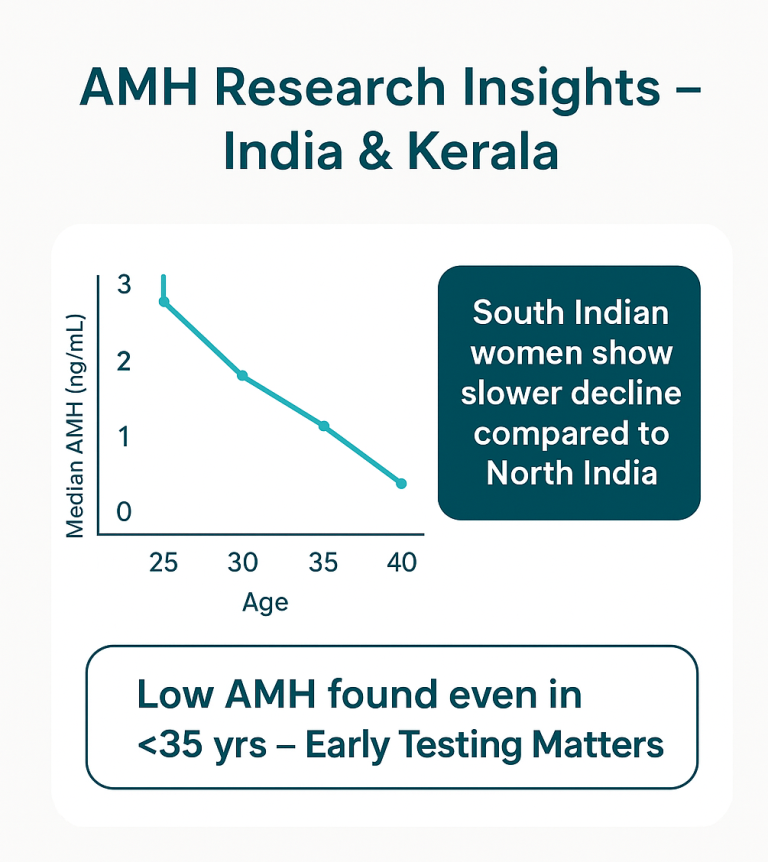Key research findings (India / South India / Kerala relevance)
-
Indian age-specific reference intervals for AMH were established (2023) — the study derived age-grouped AMH reference ranges for Indian women and suggested a diagnostic AMH cutoff for PCOS at 7.51 ng/mL. This helps avoid using foreign norms that may not match Indian populations. IJRCOG
-
There is clear geographical (North vs South India) diversity in AMH values. A hospital-based cohort study found that mean AMH values and the pattern of decline differ between North and South Indian women — South Indian cohorts often show different medians and a slower decline in some age ranges. That makes regional context (like Kerala / South India) important when interpreting AMH. PMC
-
Large Indian clinic/lab datasets show notable proportions of low AMH even in younger women. Multi-center and lab-based analyses indicate a non-trivial percentage of women under 35 with low AMH, underlining the value of earlier awareness and testing in India. PMC+1
-
Hospital/clinic studies from Kerala (and South India) confirm clinical relevance. There are published prospective studies from Kerala centres (e.g., KJK Hospital, Trivandrum and case reports from regional hospitals) that examined AMH alongside AFC and treatment outcomes — useful for local benchmarking and counselling. IJRCOG+1
-
AMH predicts ovarian response to stimulation (IVF) well, but is a limited predictor of spontaneous conception. Multiple meta-analyses and cohort studies show AMH is excellent for estimating ovarian reserve and expected egg yield in ART, but its power to predict natural pregnancy is modest — so AMH should be used together with other markers and clinical context. PMC+1
Recent Indian studies have established age-specific AMH reference ranges and highlighted that AMH levels differ by region. For women in Kerala and South India, research shows a distinct median pattern of AMH decline compared with North Indian populations.
Large clinic and laboratory datasets also reveal that even among women under 35 years, a notable percentage already have low AMH. This emphasizes the importance of early testing and personalized counselling.
Key Takeaways:
- 📊 Age-specific AMH cut-offs now available for Indian women (more accurate than Western ranges).
- 🌍 South Indian women show different AMH decline patterns compared to North Indian cohorts.
- 👩⚕️ Many younger women (<35 yrs) also show reduced ovarian reserve — early awareness matters.
- 💡 AMH is a strong predictor of ovarian response in IVF but a limited predictor of natural conception.
Sources: IJRCog 2023 (Indian AMH reference study); JHRS 2023 (Geographical diversity study); large pan-India lab analyses and Kerala hospital data.


